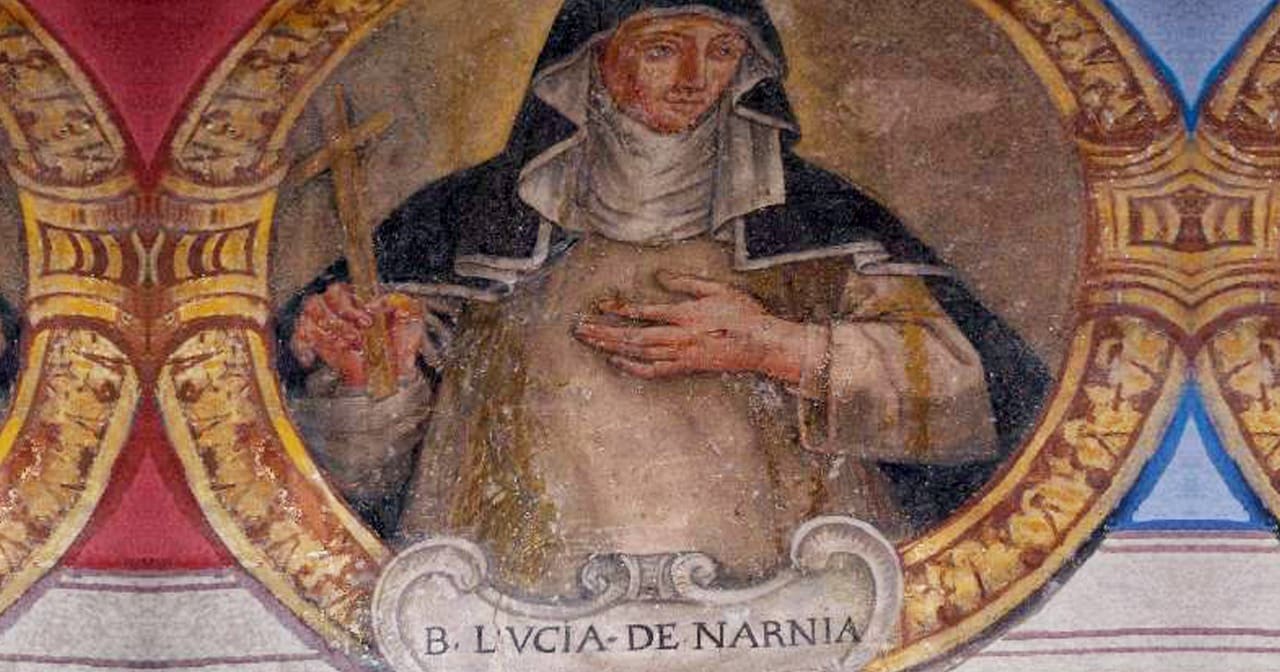The epic C.S. Lewis series of fantasy novels was inspired by a real Catholic saint, famed mystic and stigmatic Saint Lucy of Narnia.
While the fantastical land of magic, talking animals and mythological creatures is fictional, Narnia isn’t. Narnia is actually a small town near the exact center of Italy, from which Saint Lucy of Narnia hails.
Lucy Brocadelli was a Dominican lay tertiary born December 13th, 1476. A pious child, she had her first vision at the age of 5 and by 12 made a private vow of chastity, determined to become a Dominican nun.
When her father suddenly died a year later, put in the care of her uncle, she was betrothed to Count Pietro di Alessio of Milan. She felt that her vow made the marriage an impossibility. She had a vision of the Virgin Mary, Saint Dominic, and Saint Catherine of Siena telling her to have a Josephite marriage and that her vow would not be violated.
As a countess, she became renowned for her life of prayer and charity towards the poor, giving away clothing and food she would cook herself. Eventually, her draw towards religious life grew unbearable and she became a Dominican tertiary.
She later became the prioress of a convent and received the stigmata, before her successor had her locked up for the next 40 some years until the end of her life in 1544. Her body was deemed incorrupt, and she was beatified by Pope Clement XI in 1710.
The saint’s story became the inspiration for C. S. Lewis, naming his fictional land after her hometown. Walter Hooper, Lewi’s personal secretary and biographer confirms as much.
“When Walter Hooper asked C.S. Lewis where he found the word ‘Narnia’, Lewis showed him Murray’s Small Classical Atlas. On plate 8 of the Atlas is a map of ancient Italy. Lewis had underscored the name of a little town called Narnia, simply because he liked the sound of it.”
Giuseppe Fortunati, Narnia’s local historian, said C.S Lewis could have chosen the name because “Narnia means ‘water that flows’ – water is the source of life.”
When asked if principle character Lucy Pevensie was named after Saint Lucy of Narnia, Hooper confirmed the stigmatic as Lewis’ inspiration.
“After years of study it seems to me that Lewis’s character, Lucy, bears such a very strong resemblance to your saint – the inner light of Faith, the extraordinary perseverance – I don’t think the naming of his finest character Lucy can be other than intentional. I think Blessed Lucy of Narnia has furnished the world with one of the most loved, and spiritually mature characters in English fiction. And if I’m wrong? Well, let me put it this way. My guess is that when we get to Heaven we will be met by C.S.Lewis in the company of Blessed Lucy of Narnia. What will they say to us? Will they reveal whether Lewis based his Lucy on your saint? I think Blessed Lucy of Narnia and C.S.Lewis will laugh. Then Blessed Lucy will say, ‘We will tell you about that later. Other more important things come first. Jack Lewis are here to conduct you into the presence of our Host. After that we can talk about all the things on your mind. But not just yet.”
Photo credit: Fortunati Giuseppe via Wikimedia















[…] years later, UCatholic ran a lovely article exploring whether or not this saint was actually Lewis’s inspiration for […]